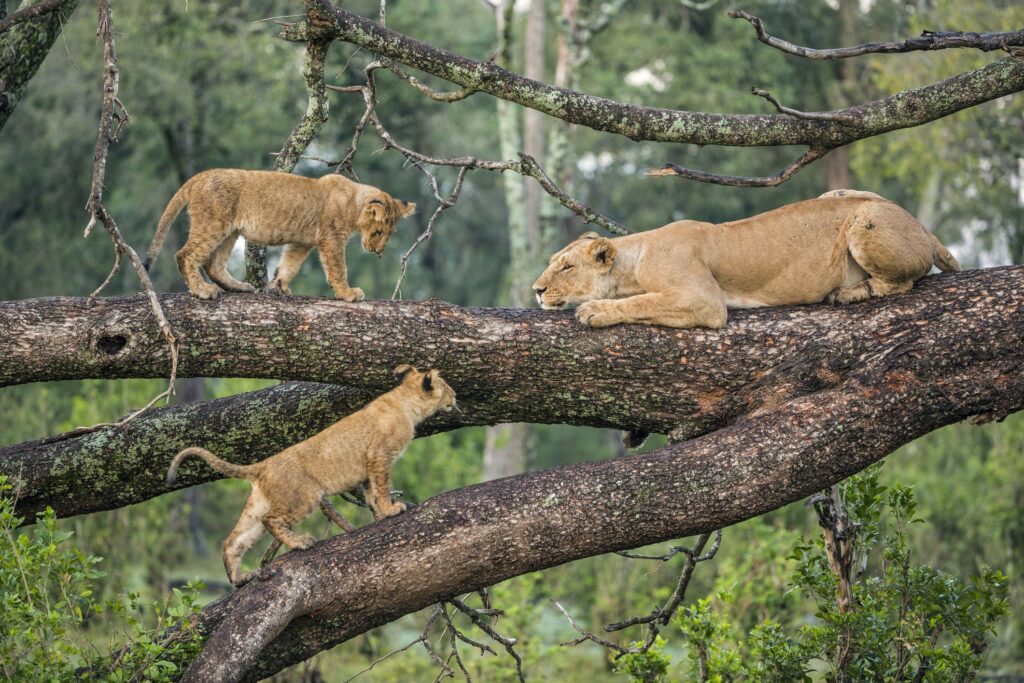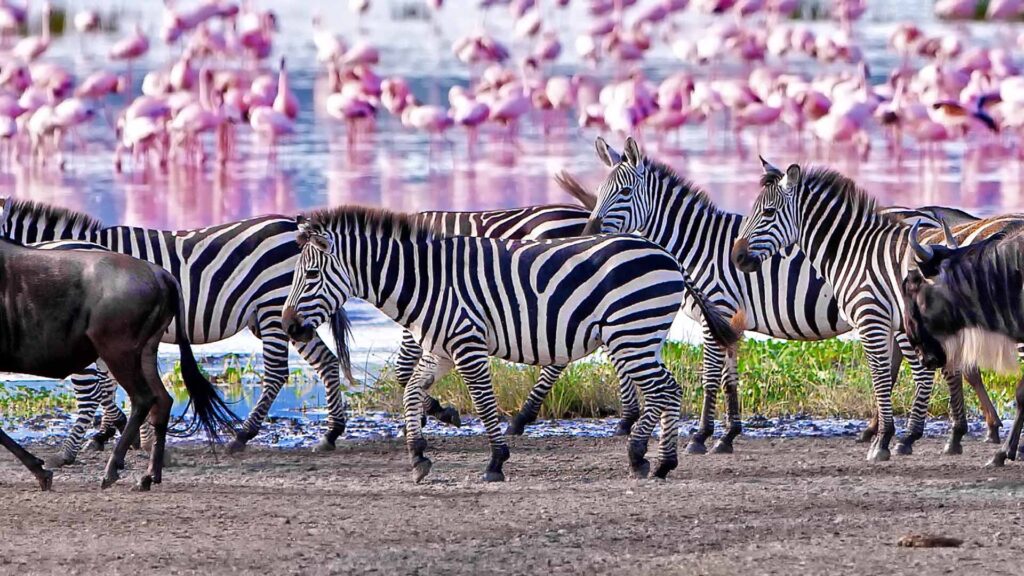Lake Manyara National Park, Tanzania
Tanzania’s Lake Manyara National Park is an exquisite destination for you and your companion to explore and enjoy. The park is among the most exquisite spots in Tanzania and all of Africa. It is located many miles from Arusha town in the Manyara area. Friendly members of the Maasai tribe will be among those you meet on the way to Manyara National Park. Individuals may gesture with their hands along the roadway to greet you and indicate that Tanzania is an exceptional nation.
The presence of the lake was a crucial element in the designation of Lake Manyara as a national park. The name Manyara is derived from the Maasai indigenous term emanyara, which refers to a species of Euphorbia tirucalli tree.
The atmosphere in the park is remarkable, characterized by several engaging and educational events that alleviate tension and enrich your understanding of biodiversity and ecosystems.
It is a lovely sight to observe a lioness resting in a tree, her legs draped over the branches. Numerous individuals are perplexed as to why the lions at Lake Manyara National Park, rather than those in other parks, exhibit this specific behavior due to their atypical conduct. Numerous attempts have been made to address this question.

Some assert that lions exhibit this activity to enhance their camouflage and improve their hunting efficacy. Some assert that it is a technique for extracting heat from the soil during the arid seasons of the year. The lions predominantly occupy tree branches during this season. The cubs will commence learning to ascend tree branches with their mother’s guidance shortly after birth. Skilled game reserves in Lake Manyara National Park will let you witness prides of lions on tree branches, occasionally accompanied by their playful cubs. A cub may require up to three years to mature sufficiently to live independently of its mother.
Lake Manyara National Park hosts a diverse array of avian species, including Ground Hornbills, referred to as Mumbi in Swahili, which predominantly forage on the ground on small reptiles and insects. Other avian species, such as the Grey Hornbill and Von Der Decken’s Hornbill, may also be observed consuming fruits and berries; these birds exhibit white and black plumage. Greetings to Lake Manyara National Park

Brown birds with dark bills and legs can be easily identified by their hammer-shaped heads. They are referred to as hammer-headed storks. They frequently construct their nests in the forks of trees adjacent to water and typically consume frogs and various other aquatic creatures, including tadpoles.
Lake Manyara National Park serves as a habitat for hippopotamuses. Upon entering Lake Manyara National Park, one may encounter substantial herds of hippos foraging in the lush marshlands. A prominent attraction of Lake Manyara, and a key reason it appears on most individuals’ bucket lists, is the hippo pool. To observe hippos, one must visit Lake Manyara National Park. Hippos frequently conceal themselves in water during the day, particularly in hot conditions. They can be observed wandering in the water, snapping their large jaws.
During the wet seasons (November/December and March to May), when the usually shallow lake reaches its maximum depth, Lake Manyara is famous for the significant aggregation of pink flamingos that gather to feed. Numerous flocks of pink flamingos, pelicans, storks, and cormorants are attracted to the lake’s highly alkaline waters during this season. Currently, the lake may occupy up to 60% of the entire park. The lake can substantially desiccate and diminish in size during arid seasons.
A concise compilation of the “most sought-after” fauna of Lake Manyara National Park and the probability of encountering them. Certain creatures are predominantly restricted to specific parks or are found solely within them. To maximize your chances of witnessing your desired animal, it is essential that you communicate your wildlife preferences to us. Lake Manyara National Park.
The percentages indicate an estimation of the frequency with which we have personally encountered these species during our travels. On each occasion we have been, we have consistently observed various species. There is a possibility of overlooking an animal as it is not a zoo. Upon visiting Lake Manyara National Park, one can select from a plethora of exceptional trips and activities. Among the most favored activities is participating in cultural events, visiting the neighboring community of Mto wa Mbu, or enjoying a delightful bicycle ride through the verdant landscapes of Lake Manyara.
Below are our premier selections for accommodations in or near Lake Manyara National Park. Reside in Karatu, Lake Manyara, or the small community of Mto Wa Mbu. A multitude of options at various price points are easily accessible. All categories of travelers can discover the perfect accommodation! We select our accommodations based on several criteria that guarantee the optimal experience. These criteria encompass the most scenic vistas, unique but thrilling locations, and, naturally, wildlife interactions!
